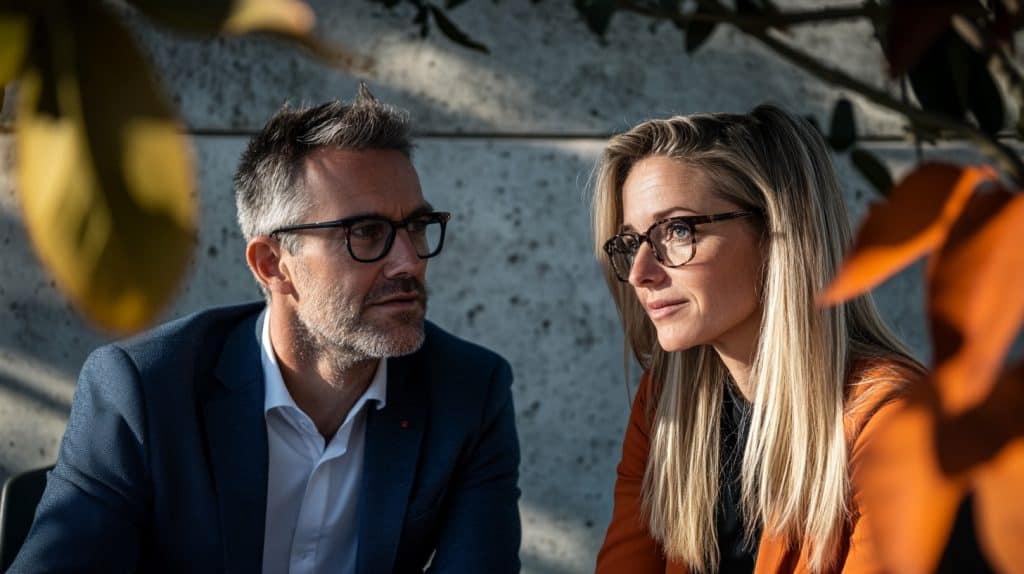Introduction
In today’s business landscape, change is a constant. Organizations must navigate market dynamics, technological advancements, and global disruptions while maintaining resilience and agility. The ability to adapt to rapidly changing environments is not just a competitive advantage but a necessity for survival. This article delves into the common challenges faced by organizations in such environments, strategies for overcoming these hurdles, and the role of leadership in fostering adaptability. Drawing from expert interviews and real-world insights, this article aims to equip readers with actionable strategies to thrive in an era of constant change.
Common challenges in rapidly changing environments
Rapid change often tests an organization’s structure, gobernancia, and culture. One of the most pressing challenges is maintaining alignment between strategy and execution. Virginie Hola notas, “Decisions disconnected from on-the-ground realities lead to key talent departures and operational inefficiencies.” This misalignment is particularly pronounced in organizations with rigid hierarchies or slow decision-making processes.
Another challenge is managing the human element during change. Aarthi Scott reflejos, "Periods of significant change often create uncertainty, and if not addressed, this uncertainty can lead to disengagement and resistance.” Employees may struggle to adapt to new roles, technologies, or ways of working, resulting in decreased productivity and morale.
Technological disruptions also pose unique challenges. Organizations must balance the adoption of new technologies with the risk of alienating employees who may lack the skills or confidence to embrace them. Jean-Christophe Simon mentions, “Introducing new tools without sufficient training or communication often creates more problems than it solves.”
Agility requires more than just speed – it demands the ability to make informed decisions without delay at every level of the organization. Companies that decentralise decision-making and enable teams to act quickly can maintain strategic alignment while adapting to market shifts.
Strategies for overcoming challenges
To navigate these challenges, organizations must adopt a multi-faceted approach that combines strategic foresight with employee engagement and operational agility. Key strategies include:
- Promoting agility in decision-making: organizations should streamline processes to enable faster responses to changing conditions. Virginie aconseja, “Empowering teams with decision-making authority creates a more agile organization that can adapt quickly to shifts in the market.”
- Strengthening strategic alignment: Ensuring that governance structures reflect operational realities is critical. Anika Grant shares, “Leaders must prioritize transparent communication to align teams with the organization’s overarching goals, especially during periods of uncertainty.”
- Investing in continuous learning: Training programs and upskilling initiatives help employees adapt to new technologies and processes. Aarthi estados, “Encouraging continuous learning reduces resistance to change and equips teams with the tools they need to thrive.”
- Fostering collaboration across functions: Breaking down silos and encouraging cross-functional collaboration enables organizations to respond more effectively to complex challenges. Olivier Prestel remarks, “Cross-functional teams bring a range of perspectives to the table, fostering innovation and adaptability.”
- Building resilience through scenario planning: organizations that anticipate potential disruptions and develop contingency plans are better positioned to navigate change. Philippe Gilet notas, “Resilience comes from preparation; organizations that plan for multiple scenarios can pivot faster when challenges arise.”
Agility is built on trust, empowerment, and customer awareness. organizations that listen closely to customer needs and allow their teams to take ownership of decisions will not only react faster but also stay ahead of change. Leaders should prioritize bold, innovative individuals who take responsibility for their choices and adjust rapidly when needed.
The role of leadership in driving adaptability
Leadership plays a central role in helping organizations navigate change. Effective leaders inspire trust, model adaptability, and create an environment where teams feel empowered to take risks and innovate. Anika emphasises, “Leaders who demonstrate resilience and transparency during uncertain times build confidence and stability within their teams.”
Felipe añade, “Leadership isn’t just about making decisions; it’s about guiding teams through uncertainty with clarity and purpose.” For leaders, fostering an environment of trust enables teams to navigate change more effectively.
Strong leadership goes beyond merely communicating a vision. It involves creating an environment where adaptability becomes second nature. Leaders must set clear directions, articulate the reasoning behind decisions, and empower teams to act with confidence, even in uncertainty.
One practical approach is adopting change management frameworks, such as Kotter’s 8-Step Model, which provides a structured approach to driving transformation. However, tools and frameworks must be adapted to the organization’s unique context to be truly effective.
Navigating rapidly changing environments requires a blend of strategic foresight, operational agility, and human-centred leadership. By fostering a culture of adaptability and resilience, organizations can turn challenges into opportunities for growth and innovation.
Agility is not just about speed. It’s about the decisions that are made at the right levels, in real time, with a clear connection to strategic goals. A company that embeds adaptability into its DNA will not only survive but thrive in uncertain times.
Even the most adaptable organizations rely on one crucial element to sustain long-term success: their teams. Agility extends beyond leadership choices. It depends on building teams that can scale effectively, collaborate seamlessly, and remain resilient in the face of change. In the next article, we explore what makes a team truly scalable, how to balance diverse skills and perspectives, and the key strategies to ensure teams can grow alongside the organization.
Conozca a los expertos:
Estos artículos presentan las perspectivas de seis líderes de la industria con amplia experiencia en liderazgo, estrategia organizacional, innovación y gestión del talento. Su experiencia en diversos sectores, desde gigantes tecnológicos hasta capital privado, creación de empresas y deep tech, aporta valiosas perspectivas sobre el crecimiento organizacional, la creación de equipos de alto rendimiento y la gestión de los desafíos del liderazgo.
Las ideas compartidas en este artículo reflejan las experiencias y perspectivas personales de los colaboradores. No representan la postura oficial de ninguna empresa u organización.
Virginie Hello – Directora de Operaciones y Creadora de Empresas
Virginie Hello is an entrepreneurial leader specialising in venture building, leadership strategy, and business transformation. As COO of Rainmaking APAC, she has led corporate innovation initiatives and helped scale startups internationally. Her expertise includes talent management, leadership team structuring, and cultural transformation in high-growth environments.
Aarthi Scott – Growth, Innovation and Business Transformation Leader
Aarthi Scott es una líder ejecutiva en transformación empresarial, éxito del cliente y planificación estratégica. Actualmente es Directora General de Google y ha desarrollado una carrera centrada en el liderazgo interdisciplinario, el crecimiento empresarial a gran escala y la alineación ejecutiva. Su experiencia abarca la innovación centrada en el cliente, el liderazgo operativo y el desarrollo de liderazgo en organizaciones globales.
Jean-Christophe Simon – Estratega de Liderazgo Ejecutivo e Innovación
Jean-Christophe Simon es un ejecutivo experimentado y estratega de innovación con una trayectoria profesional que abarca corporaciones multinacionales, capital riesgo y startups de tecnología avanzada. Ha ocupado puestos directivos y en juntas directivas en fusiones y adquisiciones, I+D y estrategia corporativa, incluyendo en Groupe SEB, Nikon y Essilor. Actualmente, asesora a empresas en la alineación de liderazgo, la innovación y el desarrollo de equipos de alto rendimiento.
Anika Grant – Directora de Recursos Humanos y Asesora Estratégica de RR.HH.
Anika Grant is a global HR leader and transformation expert with over 25 years of experience. She has led major organizational and cultural change initiatives at Uber, Dyson, and Ubisoft, where she was Chief People Officer. She specialises in leadership development, workforce transformation, and cultural evolution in high-growth environments. She now advises companies on HR strategy, talent retention, and leadership alignment.
Olivier Prestel – Director ejecutivo y especialista en gestión del cambio
Olivier Prestel es un experimentado CEO y experto en transformación con una sólida trayectoria internacional, habiendo vivido y trabajado en Europa, Asia y Estados Unidos. Ha liderado equipos multiculturales y transfronterizos, y gestionado empresas internacionales que atraviesan complejas transiciones de mercado. Su experiencia se centra en la gestión del cambio, la resiliencia organizacional y el desarrollo de equipos de liderazgo, ayudando a las empresas a escalar eficientemente, manteniendo la agilidad en entornos globales dinámicos.
Philippe Gilet – Director de Tecnología y Experto en Desarrollo de Liderazgo
Philippe Gilet is a technology leader and manager coach with deep expertise in strategic leadership assessment, Team development, and corporate innovation. As CTO & co-founder of Aledia, he has led groundbreaking R&D initiatives. His work focuses on identifying and developing leadership potential, guiding managers in scaling organizations, and ensuring strategic alignment.

















